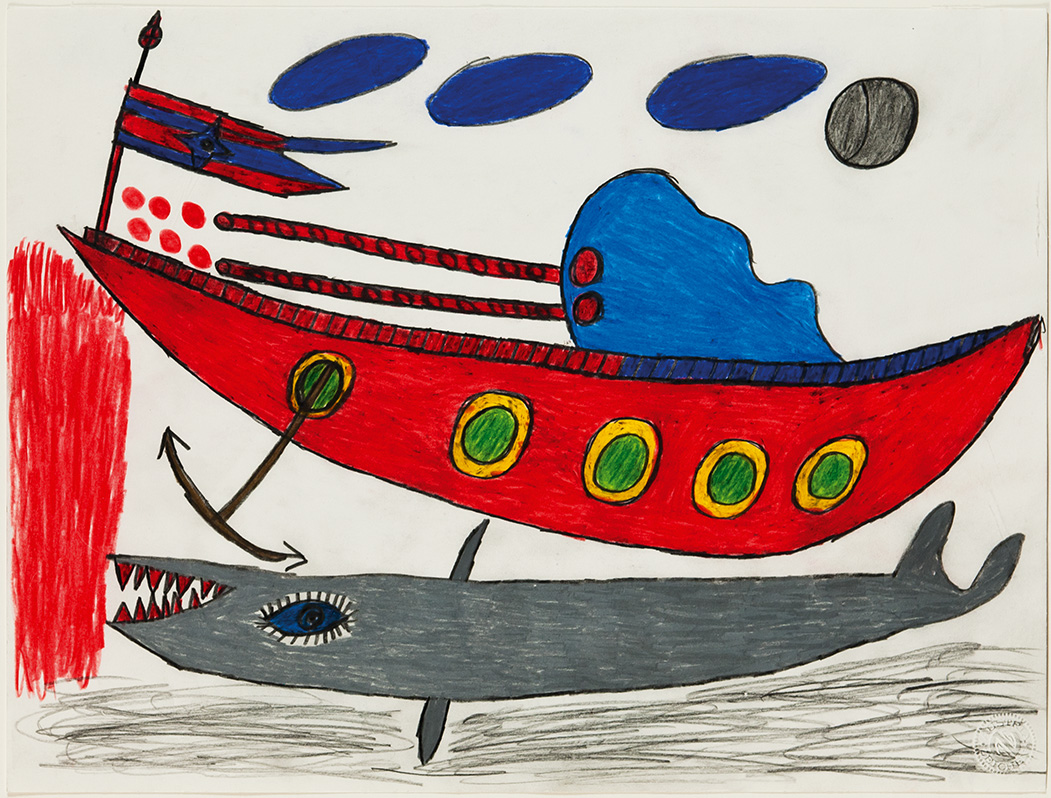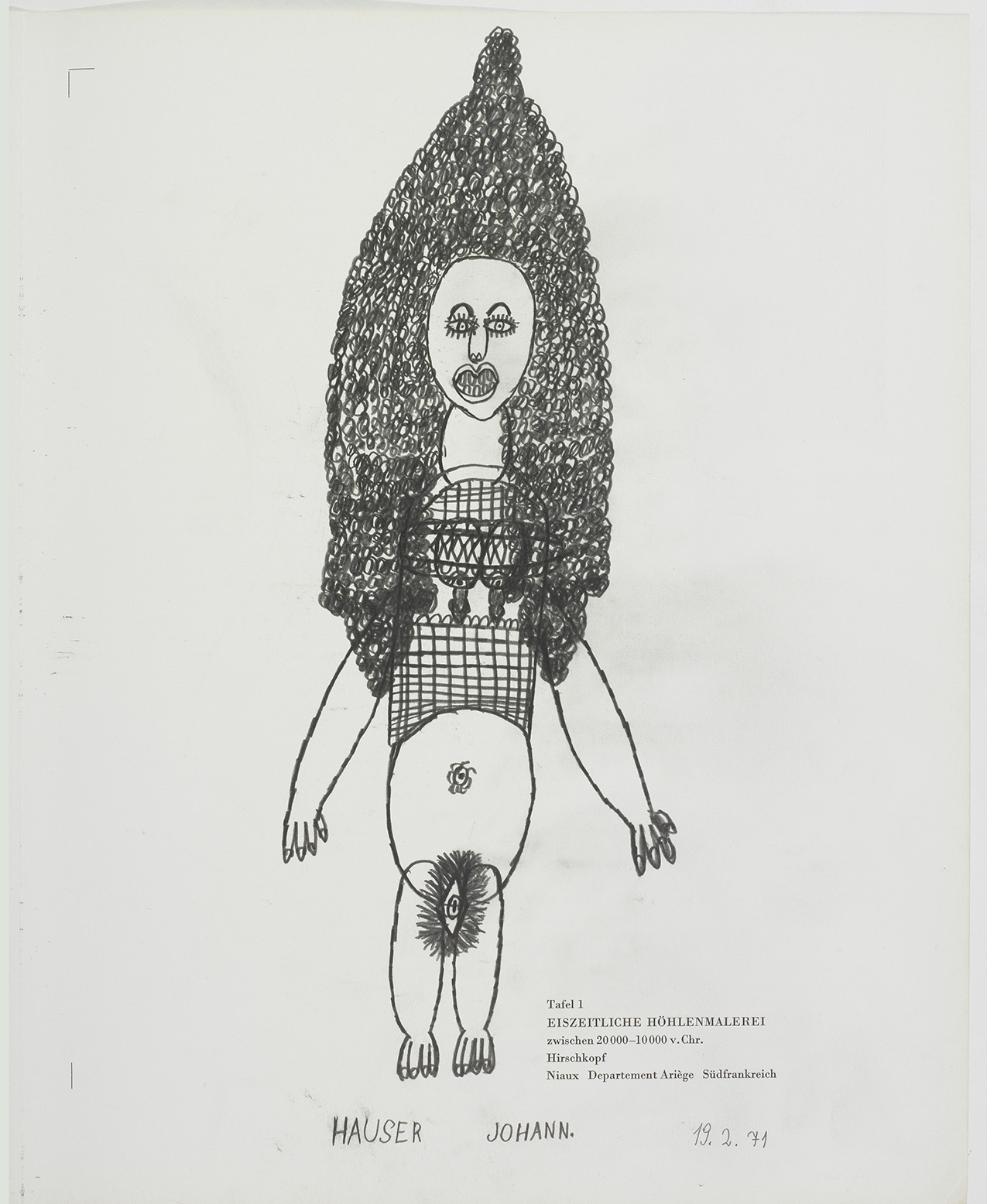Johann Hauser
Slovakia, 1926 – 1996
Born in Slovakia, Johann Hauser had to move to Austria with his family during the Second World War. He was intellectually challenged and had phases of erethism, which his mother did not know how to deal with. After stays at a few other institutions, Hauser ended up at the “Mental Health and Care Facility at Gugging,” near Klosterneuburg. It was during diagnostic tests there that his drawing talent was discovered by his psychiatrist Dr. Leo Navratil, who published Hauser’s works in a psychiatric context. Regardless of this fact, the avant-garde artists of the sixties found his work fascinating and helped facilitate an initial exhibition together with his colleagues in 1970. Hauser quickly found collectors who were also prepared to pay a lot of money for his drawings, and his work also became disseminated in a non-psychiatric context. Whether it was old memories of the war – which he had lived through and which gave rise to military aircraft, tanks, and ambulances – or his initially very uncertain, but soon budding erotic feelings toward women. Even particularly critical artists of his time, such as Arnulf Rainer or Peter Pongratz, found his depictions of these themes convincing. They were the ones who recognized Hauser’s qualities and also proclaimed them to the public. They paid homage to Hauser as their teacher or as that artist who had relegated the majority of other creators of art to the shadows. Hauser’s invention of “his” star – with its four irregular points and Prussian blue tone inside a contour drawn in pencil – also made him the leading symbolic representative of the Artists from Gugging: those autodidacts who, without any knowledge of “art,” create things of such significance specifically for this world. Ultimately, however, it was the theme of depictions of women that most fascinated Hauser and which he most frequently dealt with. In spite of the great number of works in which we see women who are clothed or naked and reservedly or demonstratively exhibit every feminine attribute, the artist succeeded in making every single image unique.

